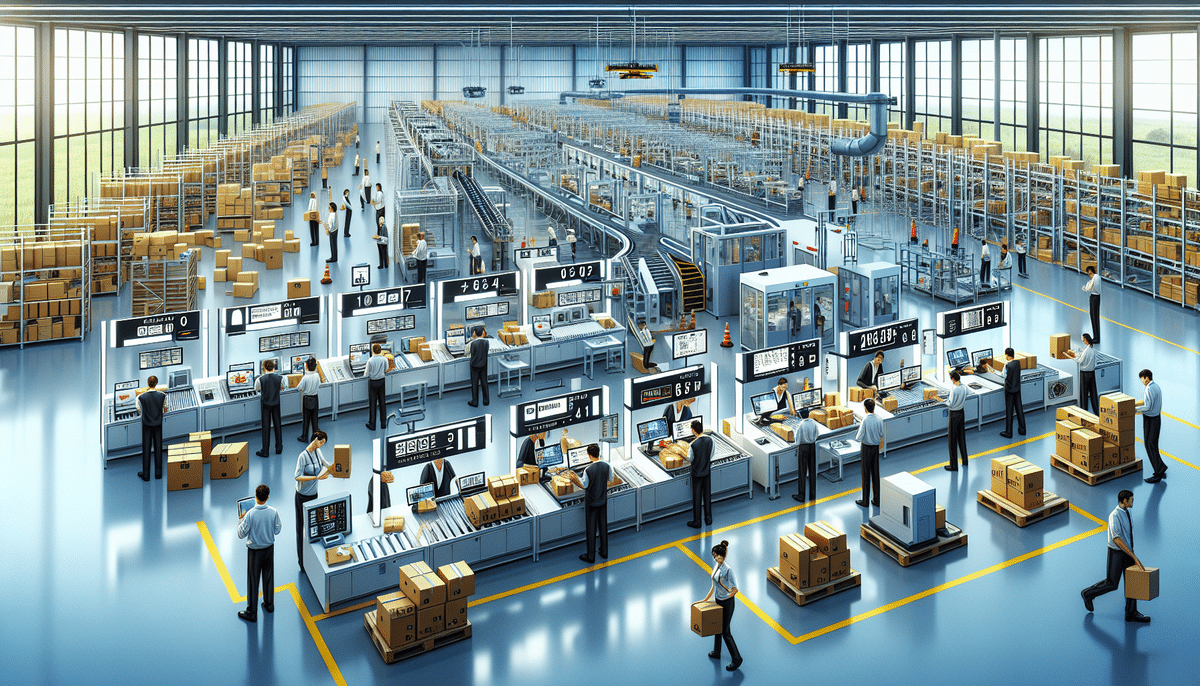Enhancing Warehouse Efficiency with Packing Stations
In the world of warehousing, packing stations have become an essential component for efficient order fulfillment processes. They not only improve productivity but also help reduce errors and increase customer satisfaction. This article explores the benefits of packing stations in warehouse management and provides practical tips to optimize your warehouse setup.
Boosting Productivity and Reducing Errors
Streamlined Workflows
Packing stations are designed to facilitate order fulfillment by providing employees with a designated area to pack and prepare products for shipping. This specialized workspace promotes organized and efficient workflows, allowing workers to focus solely on packing without navigating around other warehouse activities.
According to a 2023 industry report, warehouses utilizing dedicated packing stations experienced a 25% increase in orders processed per hour.
Enhanced Accuracy
By having a designated area for packing, workers can easily access the necessary materials and tools needed to pack each order correctly. This reduces the likelihood of errors and ensures that customers receive the correct products promptly. Studies show that organized packing stations can decrease order inaccuracies by up to 15%.
Optimizing Order Fulfillment Processes
Quality Control
Packing stations help streamline order fulfillment by grouping products and packaging materials in one area. Employees can quickly access what they need without extensive searching, resulting in fewer errors and faster processing times. Standardized processes ensure that each package is correctly labeled and safely packed for transit, maintaining product integrity.
Maintaining quality packaging reduces returns and customer complaints, contributing to higher customer satisfaction rates.
Cost Efficiency and Sustainability
Having all necessary packaging materials centralized allows for better inventory management, avoiding over-ordering or under-ordering supplies. This leads to significant savings in both time and money. Additionally, efficient packing practices contribute to a more sustainable approach by reducing packaging waste.
Investment Benefits of Packing Stations
Increased Productivity
Investing in packing stations leads to faster order fulfillment times, translating into a higher number of orders processed daily. This boost in productivity can drive revenue growth and support business expansion.
Improved Safety and Ergonomics
Dedicated packing areas reduce the risk of accidents and injuries caused by cluttered workspaces or improper handling of products. Packing stations can be equipped with ergonomic tools and equipment, such as adjustable height tables and anti-fatigue mats, to minimize worker strain and enhance comfort.
Leveraging Automation in Packing Stations
Automated Solutions
The latest technological advancements have made it possible to automate packing stations, providing even greater efficiencies and output. Automated systems handle larger volumes of orders, further reducing processing times and minimizing errors. They can adapt to various product sizes and shapes, eliminating the need for manual adjustments.
Automation not only increases throughput but also reduces labor costs by limiting the need for repetitive and physically demanding tasks.
Integration with Warehouse Management Systems
Automated packing stations can be integrated with other warehouse management systems, such as inventory management and order tracking. This integration allows for real-time updates and accurate tracking of orders, ensuring customers receive precise and timely information about their shipments.
Customizing Packing Stations for Specific Needs
Flexible Design
Customizable packing stations can be tailored to meet the specific needs of your business. Flexible designs accommodate items in various configurations, improving workspace productivity. For example, packing stations can be set up to handle cartons of different sizes or integrate necessary labeling and scanning technologies.
Space Optimization
Customizable packing stations can be designed to fit the available warehouse space, optimizing workflow and reducing the time and effort required to move items between different areas. Additionally, ergonomic considerations can be incorporated to enhance worker comfort and reduce the risk of injury.
Key Components of an Effective Packing Station
Organization and Accessibility
An effective packing station is organized, accessible, and ergonomic. Key components include shelving, packing supplies, and shipping labels. Features such as durable workbenches with ample workspace, ergonomic seating, and easy access to essential tools like scissors, tape guns, and scales are crucial.
Proper Lighting and Layout
Adequate lighting reduces eye strain and improves packing accuracy. A well-thought-out layout places frequently used items within easy reach, minimizing the time required to pack an order. Additionally, a clear system for storing and restocking supplies ensures the packing station remains ready for use at all times.
Incorporating Technology for Enhanced Efficiency
Warehouse Management Systems
Integrating a warehouse management system (WMS) with packing stations allows for accurate inventory management, order tracking, and real-time updates for customers. Technologies such as voice and barcode scanning reduce manual input errors and increase overall accuracy.
Implementing automated systems can significantly speed up the packing process, enabling your team to focus on more complex tasks and improving overall productivity.
Data-Driven Improvements
Utilizing data and analytics from your WMS can help identify areas for process improvement. By analyzing packing station performance, you can make informed decisions to streamline operations, reduce costs, and enhance customer satisfaction.
Maximizing Productivity and Ensuring Accuracy
The importance of packing stations in warehouse management cannot be overstated. Optimizing your packing station setup, incorporating technology, and strategically placing packing stations can lead to improved productivity, reduced errors, and a better customer experience.
Efficient packing stations enable handling a higher volume of orders, which can drive revenue growth. Additionally, accurate packing processes minimize the need for returns and refunds, saving time and resources.
By incorporating technologies like barcode scanners and inventory management software, you can track and monitor inventory more effectively, ensuring that the correct items are packed and shipped. This reduces errors and enhances overall operational efficiency.
Investing in efficient packing station solutions is a strategic move that can significantly impact your warehouse's performance and your business's bottom line.






















